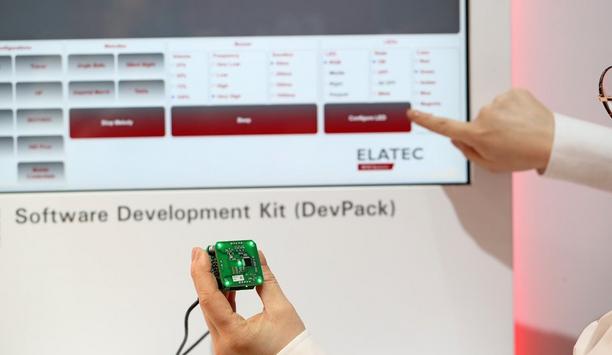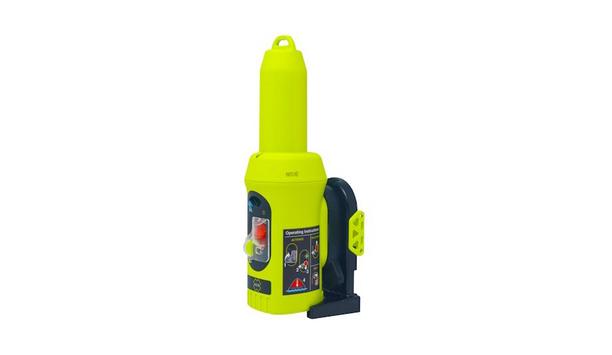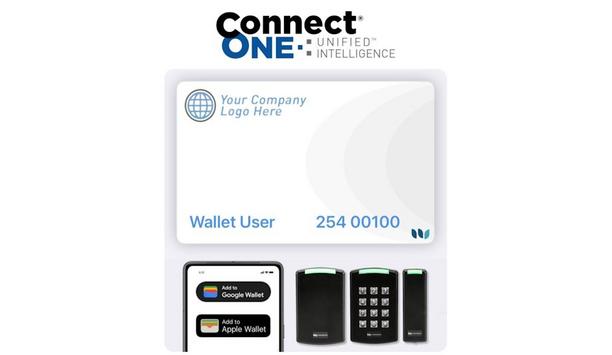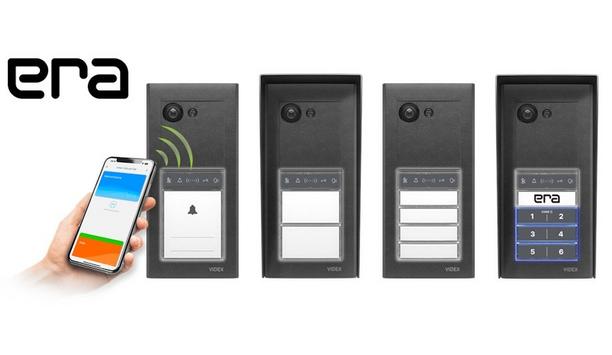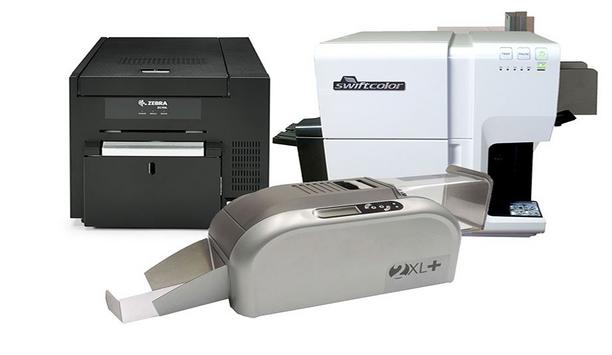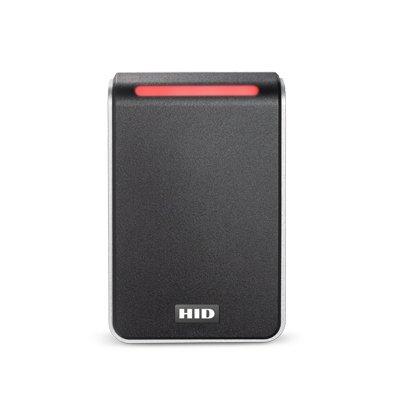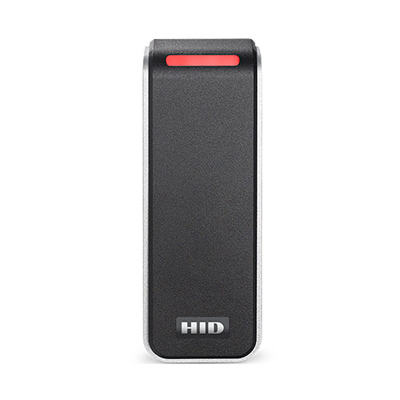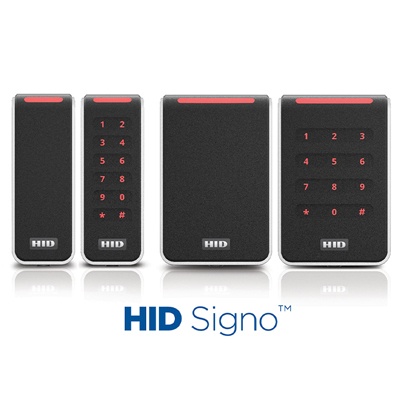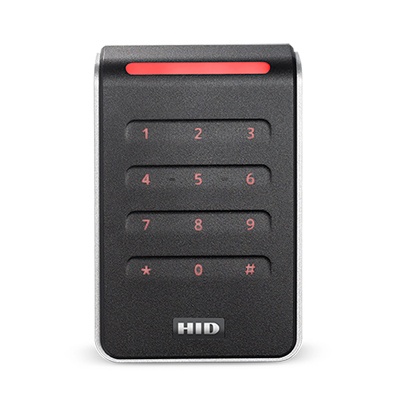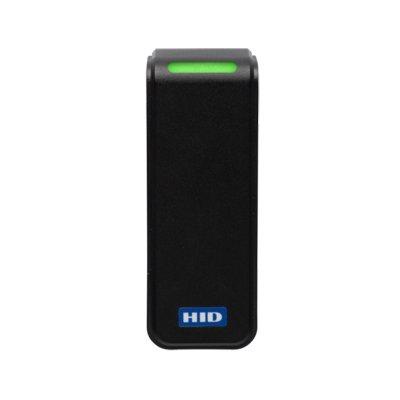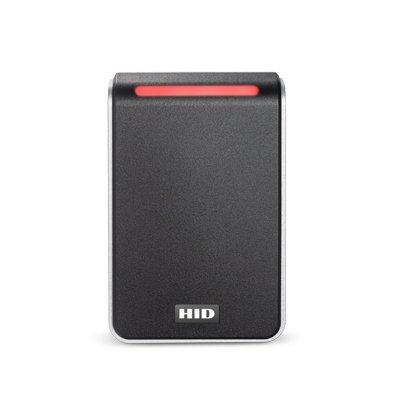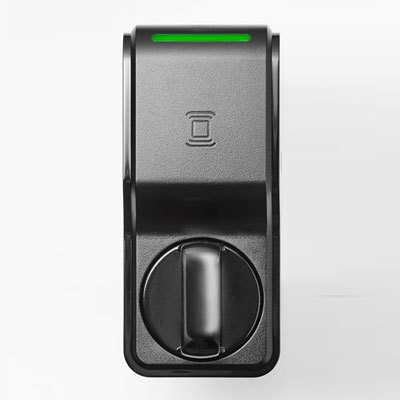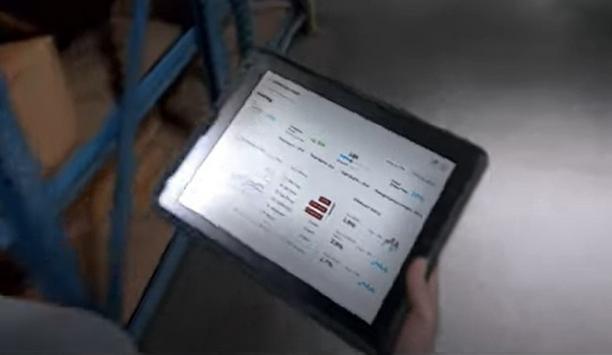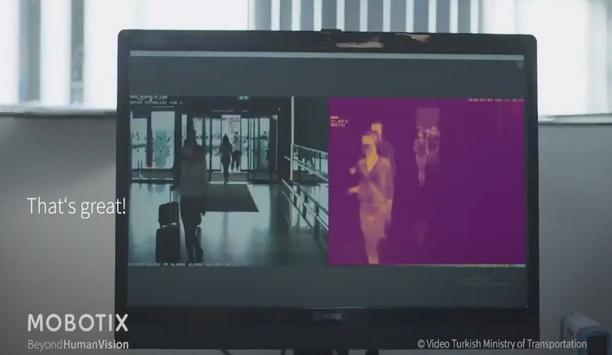Near Field Communication
ELATEC, a pioneering manufacturer of access technologies, specializing in RFID readers and credentials, has released its latest software development toolkit, TWN4 DevPack 5.07. The new version delivers faster performance, stronger security and greater flexibility for configuring and managing RFID readers, enabling flexible and future-proof access solutions. Future-ready authentication solutions “With every DevPack release, our goal is to make life easier for developers,&...
ACR Electronics, the pioneering provider of safety and survival equipment, is launching its latest innovation in maritime safety technology – the Pathfinder AIS SART (Search and Rescue Transmitter). Debuting at METSTRADE, the new AIS SART builds upon the success of its predecessor, the ACR Pathfinder Pro, combining proven reliability with cutting-edge AIS (Automatic Identification System) technology to advance search and rescue efforts at sea. IMO SOLAS regulations The ACR Pathfinder Pr...
Zimperium zLabs published new findings showing a rapid, global increase in NFC relay malware that abuses Android’s Host Card Emulation (HCE) to harvest payment data and complete fraudulent “tap-to-pay” transactions. First observed in April 2024 as isolated samples, this campaign family has expanded to more than 760 malicious apps, leveraging 70+ command-and-control servers, dozens of Telegram bots/channels, and localized impersonation of banks and government services across R...
The German Design Council has been shaping the design landscape in Germany since 1953. Every year, the organization presents the ICONIC AWARD to recognize visionary architecture and innovative solutions. At the 2025 awards ceremony, dormakaba's Quantum Pixel+ electronic hotel lock was honored with the ICONIC AWARD. Digital product solution The digital product solution increases convenience for hotel guests. Modern technologies, such as NFC, RFID, Bluetooth® Low Energy, and digital wallets...
Connected Technologies announces the launch of Connect ONE® NFC Wallet Card Solutions, giving users a simple and secure way to use their smartphones as access credentials through Apple and Google Wallets. With Connect ONE NFC Wallet Card Solutions, organizations can eliminate the hassle of physical badges. Users simply hold their phone near a compatible reader to gain access — no apps to download and no device unlocking required, with cards remaining functional for a period even if th...
Signicat, the pioneering pan-European digital identity platform, has announced its acquisition of Inverid, the pioneering Dutch provider of NFC-based digital identity verification solutions, for an undisclosed sum from majority shareholder Main Capital and the founders. Existing shareholders will reinvest a substantial part of the consideration in Signicat, underlying their strong support of the combination. Inverid’s flagship solution The acquisition strengthens Si...
News
Vismo has optimized its mass notification offering to strengthen customers’ employee wellbeing anywhere in the world during an emergency or emerging threat, by including it on the Vismo Monitor App. For the first time, employers can now see their employees' real-time locations on the app instead of a desktop computer, and immediately send mass notifications to staff affected by, or under potential threat from, a crisis, via the app. “Having all the functionality of our mass notification on the app saves crucial time and gives security teams greater flexibility by not having to be in a static, fixed place of work in front of a computer screen,” says Vismo Global Sales Director Colin Dale. Any mobile device The app works with any mobile device, and the Vismo platform supporting satellite phones and trackers, to give a faster response to any risk to wellbeing and to business continuity. “We achieved this by integrating the app and with our secure portal so that the app mirrors the full functionality of the portal,” says Dale. “That saves time for employers’ security operations. No longer do they have to switch platforms to run mass notifications or indeed any other function of the app. They can do everything on a smartphone.” Robust network connectivity “One unique aspect of our tier one service is our ability to use more than 600 direct roaming agreements globally in a permanent roaming solution where needed,” Dale adds. “They give employer organizations very powerful roaming connectivity, with fallbacks and optional eSIMs, to ensure the most robust network connectivity possible for all two-way mass notification actions.” Multi-channel messaging – and more Vismo’s mass notification makes use of multi-channel messaging between security teams and app users Vismo’s mass notification makes use of multi-channel messaging between security teams and app users. It is real-time communication with an entire workforce, selected groups of staff or one individual, regardless of their location. Additionally, it can be integrated with - and customized via - employer organizations’ own infrastructure including HR systems and security protocols. Intelligence feeds Vismo utilizes intelligence feeds 24/7 to see threats as they are reported by specialist intelligence gathering operations, and other sources, including emergency services, individuals and news and other organizations. Dale comments, “Mass notification is a fundamental part of safeguarding staff in any situation anywhere, whether in at-risk areas and or wherever the unexpected can suddenly happen.” “Immediately they learn of a threat, employer organizations’ security staff, or outsourced security team, can take immediate steps to help. Step number one is to use mass notification to give an urgent warning about what is happening or about to happen, and then give more details, with advice on how to be safe as events unfold.” Emergency services Dale adds, “Step two includes optional phone conversations between those under duress or at risk, and security staff, to gain further information including the proximity of the app users to what is unfolding and more detail about it.” “Step three involves liaison with emergency services and private security companies, and, ultimately, evacuation, if required.”
Everon, a pioneering security integrator and premier provider of commercial security, video, fire and life safety solutions in the U.S., recently worked with Initiative for Affordable Housing’s re:loom program to upcycle retired uniforms into a unique line of tote bags. Through this initiative, Everon and Initiative for Affordable Housing – an Atlanta-based nonprofit organization that provides services, housing, and employment for area residents in need or experiencing homelessness – demonstrated how collaboration and common values can drive sustainable practices and create a positive impact. Inventory of unused work uniforms Everon to support Initiative for Affordable Housing’s comprehensive services for low-income While establishing Everon as a standalone organization after separating from its former parent company in 2023, rebranding efforts brought attention to an inventory of unused work uniforms branded with the previous company logo. This provided an opportunity for Everon to support Initiative for Affordable Housing’s comprehensive services for low-income and homeless families by upcycling the retired uniforms in partnership with the nonprofit’s re:loom program. re:loom successfully diverts thousands of pounds of excess textiles from landfills and incinerators annually, making a meaningful environmental impact while enabling Everon to make a difference for in-need and vulnerable populations. Innovative practices to upcycle retired uniforms Engaging in thoughtful, innovative practices to upcycle retired uniforms represents an essential part of the Everon story and the company’s commitment to help protect the communities it serves every day. “Transforming the unused uniforms into something entirely new felt a little bit like a metaphor for the transformation our organization underwent to become Everon,” said Beth Tarnoff, Chief Marketing Officer, Everon. How intentional partnership can support a greater The tote bags are now shared as promotional giveaways for Everon at tradeshows and events Tarnoff added: “It’s a continuation of our rebrand story, and we approached this endeavor as thoughtfully as we approached establishing Everon in the security industry. It was a powerful way to give these perfectly good materials a new purpose, and at the same time give back to the community.” The tote bags are now shared as promotional giveaways for Everon at tradeshows and events – helping tell a story of how intentional partnership can support a greater, community-focused mission. Effect of positive change “By working together, we’re reducing textile waste, empowering people, and inspiring others to see the potential in overlooked materials. We’re so grateful to Lifecycle Building Center and their Match Program for connecting us with this opportunity, as well as to Everon for engaging in sustainable practices through our program,” Len Al Haas, interim Executive Director, Initiative for Affordable Housing and re:loom. “By working together, we’re creating a ripple effect of positive change – proving that when we combine creativity, collaboration, and a shared purpose, we can make a difference for our planet and our communities.”
Videx has launched the ERA23V, a sleek and innovative video entry panel designed to redefine door entry and access control. As the first in a new range of ERA panels (that will also include IP & GSM variants), it is built on the widely used VX2300 2-wire bus video system, offering unmatched flexibility and ease of installation. Designed for modern living and business needs, flexibility is at the heart of the ERA23V. The panel supports multiple entrances, up to four apartments and four devices per apartment, making it the ideal solution for residential and commercial properties. Built-in keypad The entrance panel can be configured with one, two or four buttons or as a single button The entrance panel can be configured with one, two, or four buttons or as a single button with a coded keypad, simply by changing the button inserts and adjusting the settings. The built-in keypad offers coded entry with no additional cost, delivering enhanced security with up to 400 programmable access codes. This streamlined approach ensures that stockists and installers benefit from a single, adaptable product instead of multiple variations. Video entry technology Rob Sands, Technical Director at Videx, said: “The ERA23V is a significant step forward in video entry technology, providing a highly adaptable and scalable solution that meets the changing needs of residential and commercial properties." "By combining stylish design with advanced access control features, we’ve created a system that is both easy to install and incredibly versatile.” ERA23V effortless expansion Available as a kit, it comes with a choice of video monitors, including a 3.5” videophone Available as a kit, it comes with a choice of video monitors, including a 3.5” videophone, a 3.5” handsfree monitor, or a 7” handsfree monitor. Desk kits are also available. Rob Sands continued: “The ERA23V is designed for effortless expansion. Kits come complete with a customizable entrance panel, video monitor and power supply unit, with additional entrance panels, monitors and accessories available separately if required." New benchmark in video entry security Sands added: "As part of the VX2300 family, it integrates seamlessly with existing system parts and accessories, ensuring it meets the demands of both new installations and upgrades. With a sleek design, intelligent features and ultimate flexibility, ERA23V is setting a new benchmark in video entry security.” The ERA23V’s slim design at only 96mm wide ensures it will fit perfectly on a typical 100mm post while its low profile compact design ensures it won’t look out of place in any environment, residential or commercial. ERA23V features ERA23V includes features such as a simple 2 wire bus, high-quality audio & video, voice assistance Particular care has gone into ensuring its easy of installation but this does not mean a compromise on functionality, the ERA23V include features such as a simple 2 wire bus, high quality audio & video, voice assistance, multi colored lighting, additional inputs and outputs, lock and gate control, coded access, NFC (Near Field Communication), RS485 & Bluetooth technology for both access control for up to 2000 users and system configuration using a Videx app. IK09 impact resistance and IP65 environmental protection The wide-angle CMOS camera provides clear video even in low light, while the slimline gunmetal black aluminum frame ensures durability while still achieving a modern aesthetic. The panel is designed to withstand the elements, featuring IK09 impact resistance and IP65 environmental protection. An optional rain shield adds further durability.
Jacksons Fencing announces the return of Cris Francis as its new Commercial Director. With over 20 years of experience in sales, leadership and the security industry, Cris brings invaluable expertise and a wealth of insight to his new role. His return to Jacksons Fencing after a six-year absence marks a significant milestone for the company, as it continues to build on its reputation for growth, innovation, and strategic development in the sector. A proven career Cris began his career in the motor trade, where his interest in cars led him to the motor insurance industry before transitioning to sales in the security sector. His passion for bespoke security solutions eventually brought him to Jacksons Fencing, where he played a pivotal role in shaping the company’s commercial strategy during his initial tenure. Cris significantly expanded his knowledge base during his time at the BRE Before returning to Jacksons Fencing, Cris significantly expanded his knowledge base during his time at the Building Research Establishment (BRE), where he served as Head of Assurance. At BRE, he focused on operational leadership. His experience at BRE solidified his passion for security innovation and deepened his understanding of product standards, insights he is eager to apply in his new role at Jacksons Fencing. “I’m excited to return to Jacksons Fencing at such an exciting time for the company,” Cris remarked. “The business has grown considerably in the years since I left, with its ability to take on larger, more complex projects increasing significantly. I’m eager to be part of this growth and contribute to the continued success of the company moving forward.” Shaping leadership Cris’ extensive sales background has greatly influenced his leadership style, which is centered around “radical candor” - honesty, directness, and transparency. He attributes much of his leadership development to mentors like Peter Jackson, who helped shape his resilient approach to overcoming challenges and driving business success. “My leadership style has always been about encouraging open, honest communication and pushing beyond the status quo,” Cris explains. “These values have served me throughout my career, and I look forward to bringing this mindset back to Jacksons Fencing as we continue to drive growth and innovation.” Driving innovation and customer assurance Customers are more focused than ever on ensuring the longevity and version of products Since Cris' last tenure at Jacksons Fencing, the fencing industry has undergone significant changes, with a shift toward compliance, greater product assurance, and customer expectations. Customers now are more focused than ever on ensuring the longevity and performance of products, with robust specifications becoming a top purchasing driver. “As the industry evolves, customers expect more than just high-quality products; they want to ensure that both the product and installation meet the highest standards,” says Cris. “This has changed the way we approach sales at Jacksons Fencing, with a greater focus on enhancing customer experience right from the initial contact.” New technologies to improve customer interactions As Jacksons Fencing continues to innovate, Cris is committed to leveraging new technologies to further improve customer interactions. The aim is to keep Jacksons Fencing at the forefront of the industry, while maintaining the exceptional customer service for which the company is known. Cris plans on developing technologies Cris plans to focus on developing technologies that improve client experience Cris sees ample opportunities for growth in the fencing industry, driven by diversification and continued innovation. With Jacksons Fencing’s broad product range already in place, Cris plans to focus on developing technologies that enhance customer experience and streamline interactions. Leadership and experience at BRE Peter Jackson, Managing Director of Jacksons Fencing, welcomed Cris’ return with enthusiasm: “We’re absolutely delighted to welcome Cris back to the team. His deep industry expertise, combined with his leadership and experience at BRE, will be instrumental as we continue to refine our commercial strategy." "His return marks a renewed focus on our growth, and we’re confident that under his leadership, we’ll continue to innovate and deliver exceptional results.”
An all-in-one door intercom platform to transform building access and communication by integrating a video door intercom system with the latest in access control. Robust access control solutions Salto Systems announces the launch of the XS4 Com door intercom cloud-based platform, an advanced video smart intercom solution engineered to seamlessly integrate with modern digital lifestyles across residential, workspace, and commercial environments. XS4 Com represents Salto’s first foray into the smart intercom space, combining innovative technology with the robust access control solutions that Salto is known for. XS4 Com iGO It is a user-friendly system that enables visitors to initiate communication with users XS4 Com iGO represents a significant advancement in visitor management and access control. It is a user-friendly system that enables visitors to initiate communication with users by simply scanning a QR code or tapping their NFC-enabled phone on an iGO plate, featuring two-way audio and video verification for entry control. Perimeter access point Residents can then manage these interactions directly from their smartphones, with the ability to accept calls, visually verify visitors, and remotely grant access if necessary. This innovative technology does not rely on power or internet connection, solving complexity and cost issues from traditional intercom systems. With XS4 Com iGO technology and hardware-free solution, any building can turn a perimeter access point into a connected, yet decentralized, secure entry. Advanced features for modern access need Salto also offers its uniquely developed XS4 Com platform to communicate with visitors and manage door and gate access from anywhere. This system integrates directly with Salto's smart access control platforms, Salto KS and Homelok, creating a unified and user-friendly door intercom and access control connected ecosystem accessible via web and mobile applications by visitors and residents. This advanced video door intercom system centralizes all access control-related features into a single, comprehensive platform, making XS4 Com an all-in-one solution for managing building access and communication. Fast, and more efficient access control This feature, combined with seamless integration with existing Salto solutions and smart locking technology Geofencing technology further enhances security by ensuring that calls can only be initiated when visitors are physically near the property. This feature, combined with seamless integration with existing Salto solutions and smart locking technology to connect any entry or gate makes XS4 Com iGO adaptable to various environments, ensuring secure, fast, and more efficient access control. Ease of installation and use XS4 Com is designed with simplicity in mind, offering an intuitive interface for both Installers and Site Admins. Installers can easily integrate the system into existing setups with minimal disruption, while systems administrators or building operators benefit from streamlined processes for real-time entry monitoring, controlling access points remotely, and communication, offering a seamless intercom experience for visitors, residents, and guests. The system's ease of use does not compromise its advanced capabilities, making it an ideal choice for modern building ecosystems.
MOBOTIX AG is pleased to announce that effective October 1st, Ashley Lim has assumed leadership of the MOBOTIX APAC team. Since January 2022, she has served as Regional Sales Manager for Asia, adeptly overseeing the company's operations in the region from Melbourne, Australia. With the impending departure of Ryan Philp from MOBOTIX in November 2024, Ashley Lim will now extend her responsibilities to encompass the entire APAC region. Ashley's leadership "We extend our gratitude to Ryan for his significant and successful contributions to our company and wish him every success in his future endeavors," stated Thomas Lausten, CEO of MOBOTIX AG. "Simultaneously, we are confident that under Ashley's leadership, our APAC business will remain in capable hands." Ashley Lim brings a wealth of knowledge and experience to her new role. She holds a Master's degree in Social Work, along with a graduate diploma in Accounting and a Bachelor's degree in Psychology and Japanese. Partners in the APAC region Lim's extensive sales expertise has been honed through successful tenures at pioneering global companies, including Apple and DigiCert Inc. (formerly Symantec). “We are delighted to have Ashley Lim as a capable pioneer at the helm of our APAC team, who, with her great sales talent and exceptional social skills, will be a competent and reliable point of contact for our customers and partners in the APAC region,” said Lausten.


Expert commentary
GSX 2023 marks a poignant moment for the security industry as an increasingly complex risk landscape converges with the acceleration of technology innovation. Emerging from this environment are three key trends that will dominate the conference and the future of the security industry: (i) the adoption of AI, (ii) the use of predictive analytics, and (iii) a hybrid global and local risk management approach. As Chief Security Officer of Crisis24, a GardaWorld company, I regularly advise clients on how these trends are evolving and impacting their security and risk management approach. Here’s how we can expect to see them discussed at the show next month: Trend 1: Artificial intelligence is the new industry standard. AI is this year's buzzword. While AI is not new to the industry, this year it has become a standard to operate with AI being adopted or expanded more ubiquitously. Legacy AI-enhanced security offerings that have been years in the making are becoming more advanced and are being integrated into expert analyst teams to leverage the best of both man and machine. Limitations AI augments the data processing ability; however, human-led intelligence is still necessary AI can generate unparalleled levels of data and insights, but it also has its limitations. AI does not have the emotional intelligence that can influence decision-making. For instance, our Crisis24 analyst teams know that every one of the intelligence alerts they provide to leadership may save a life or protect a business. AI augments the data processing ability; however, human-led intelligence is still necessary to effectively elevate knowledge of those threats through an organization to incite action. Trend 2: Predictive analytics powered by AI will transform security operations. Predictive analytics enabled by AI will allow for more precise planning and execution of true emergency management. Those living or operating in conflict zones must be ready to spring into action and predictive analytics can help better evaluate risks, threat levels, and the probability of certain events. When I served in Iraq in 2003, our greatest challenge was operating in an unpredictable environment and navigating the many unknown threats. With these large-scale threats, it was difficult to account for the vast array of variables involved and ensure that all parties were protected. Broad and instant visibility Predictive analytics provides broad and instant visibility into numerous potential outcomes, impacts, and mitigation strategies for a wide variety of threats. When dealing with risks that are constantly evolving and quickly accelerating, the insights from predictive analytics can have a direct impact on risk management, mitigation strategies, and preparedness levels. Predictive analytics can anticipate the ripple effect that threats can have on organizations, their people, and their assets and enable security teams to plan. Trend 3: Risk mitigation is increasingly both global and hyper-local. A company’s workforce is often scattered across the country or the world, working from home or on the go Remote work and a flood of 24/7 data sources have driven demand for timely, accurate, and hyper-local intelligence. Where before an organization may have had a handful of facilities around the world where its employees gathered, now a company’s workforce is often scattered across the country or the world, working from home or on the go. Preventive mitigation steps To keep their people and assets safe, business pioneers need to know what’s happening in all corners of the globe, while also easily accessing details on what is happening at the street corner level. How a business takes care of its people, including anticipating risks and taking preventive mitigation steps as well as responding quickly in the face of threats, can directly affect its reputation. Every company is in the business of safety and security when it comes to looking after its people on a global, national, and increasingly hyper-local scale.
Physical security is essential for a modern production facility, users don’t want just anyone entering the building or accessing secure areas. But what about production machinery? Machine authentication is often a missing link in the security plan for manufacturers. Why machine authentication? Most manufacturers have made significant investments in physical access control (PAC) for production facilities. Few shops currently hand out physical keys to employees or leave the building unlocked during production hours. For all but the smallest shops, front-door access typically involves individual radio-frequency identification (RFID) badges that enable tracking of who is coming and going and at what times. Use of physical keys, password login It is simply assumed that anyone who has access to the factory floor has the knowledge, authority, and training But when it comes to production machinery, many manufacturers still rely on physical keys, password login on the human-machine interface (HMI), or a shared PIN to unlock machine access. In some shops, machines may not be secured at all, it is simply assumed that anyone who has access to the factory floor has the knowledge, authority, and training to use the machines responsibly. However, this is not necessarily a good assumption, especially in a larger manufacturing plant where many people can access the production floor. Valuable and sensitive equipment CNC machines, robotic welders, process equipment, and other production machinery can cost anywhere from $5,000 to half a million or more, depending on their size and function. They also have significant safety risks for untrained users and may hold valuable and sensitive IP (such as customer design specs or batch recipes). User authentication Authenticating users at the machine level closes an important security loophole and makes plants safer and more productive. Machine authentication prevents untrained or unauthorized users from accessing production machinery. The right authentication system also allows access levels to be tailored for different users based on training credentials, job roles, or even projects. Machine authentication benefits A strong machine authentication solution provides several benefits for manufacturers: Minimizes unplanned downtime and expensive damage to machines caused by untrained operators. Enables tracking of production outcomes by machine operator for better quality control and troubleshooting. Protects company and client IP held on the machine by preventing unauthorized access to machine controls and memory. Enhances plant safety and compliance by limiting machine access to operators with the appropriate credentials. Reduces the risk of deliberate sabotage by unauthorized operators, including damage to machines and production facilities and data theft or corruption. Mark Merino, the Director of the Digital Factory Group for Polaris Automation, explains, “Machine authentication allows us to identify which people are logged into different pieces of equipment and make sure they are trained appropriately for the machine and have the right clearances for the data they are trying to access.” Choosing the right machine authentication solution Access control for production machinery can be accomplished by various means, including password and PIN systems, physical keys or fobs, RFID badges, or smartphone-based mobile credentialing systems. The best machine authentication system will: Be highly reliable and secure to protect the machine from unauthorized access. Enable identification of individual operators and tracking of who has used the machines, at what times, and for what projects. Allow access levels to be differentiated by the user. Be easy to implement and administer. Discourage sharing or cloning of credentials. RFID readers An RFID reader can be easily connected to or integrated with the HMI for the machine In most manufacturing environments, the simplest solution for machine authentication is the RFID badge employees already carry for building entry. An RFID reader can be easily connected to or integrated with the HMI for the machine. All users must do to authenticate themselves is swipe their badge over the reader to unlock machine controls. RFID benefits RFID provides multiple benefits for end users, IT, and managers: It leverages technology already widely used, so users do not have to carry a separate key or fob to access machine controls. It is more secure and easier to manage than a password system, as passwords are frequently forgotten, shared, or hacked. Unlike shared PINs, physical keys, or fobs, user authentication via an ID badge enables accurate identification of who is logging into the machine. Users are much less likely to share their picture ID badge (which is often also linked to HR functions such as time and attendance) than a machine password, PIN, or key. If an ID badge is lost or stolen, or an employee leaves the company, IT can easily disable access to the card. RFID credentials are very difficult to hack or clone. Transmission between the reader and card can be encrypted for added security. Unlike biometric options, RFID is highly reliable even in hot, dirty, or humid environments and does not require workers to remove gloves, safety goggles, or masks. Getting started with machine authentication Machine authentication starts with selecting the right RFID reader. A universal RFID reader supports easy implementation, integration with other building systems, and scaling. A universal reader also provides flexibility for the future in case companies want to change transponder technologies or allow for user authentication using mobile credentials on a smartphone. IIoT model User authentication must be designed within the context of the wider security ecosystem of the plant To ensure the security of production machinery, user authentication must be designed within the context of the wider security ecosystem of the plant. Modern production machines are increasingly networked and connected in an “Industrial Internet of Things” (IIoT) model. That means machines are not only vulnerable themselves but are also endpoints in the broader IT landscape of the plant. Machine authentication systems must incorporate best practices for endpoint security, such as those outlined by ISO (International Organization for Standardization), NIST (National Institute of Standards and Technology), and other industry organizations. Best practices: The reader installation should be tamper-proofed to prevent physical disruption of the authentication system. Use an encryption standard suitable for the security level of the application. Encryption prevents data interception or card cloning. If higher security is desired, RFID can be implemented as part of a multi-factor authentication system along with biometrics and/or a password or PIN. The authentication system should support different access levels for different users or classes of users. A role-based permission system allows for different levels of access for line operators, supervisors, IT, and maintenance, for example. For maximum safety and security, individual users should only have the minimum access required to do their jobs. With secure machine authentication, manufacturers can protect people, production equipment, and IP, while enabling smooth operations. It all starts with an authentication system that supports reliable and secure operator identification at the machine level.
Mass attacks continue to lead the news far too often. All are horrific and disturbing, but the heartbreaking tragedies that have unfolded on school campuses touch us the deepest and have the most profound effects on our communities. NTAC statistics According to a January 2023 report from the United States Secret Service National Threat Assessment Center (NTAC), K-12 events accounted for 6% of all mass attacks in public and semi-public spaces between 2016 and 2020. 6% may strike some as being a small number, given all the coverage. Safeguarding schools and campuses By no means does the statistic diminish the pressing need for K-12 stakeholders to better safeguard their schools While the finding indicates campus attacks are relatively rare, that doesn’t mean they are any less significant. And, by no means does the statistic diminish the pressing need for K-12 stakeholders to better safeguard their schools with the most appropriate strategies, technological solutions, training, and other available resources to address vulnerabilities and thwart violence in K-12 schools. What we are learning about mass attacks Questions come up about how mass attacks are evolving and what we’re learning about perpetrators and their tactics. It’s more accurate to describe the circumstances and behaviors as fluid. There’s no obvious straight line that’s simple to track. However, there is reliable research that shows progress is being made in assessing how a range of observable concerning behaviors may play a factor. MAPS report The most comprehensive resource for insights into warning signs is the latest U.S. Secret Service NTAC report cited above that was released early in 2023 titled “Mass Attacks in Public Spaces: 2016 – 2020”. Called MAPS for short, the report details the extensive research and data behind identifying and recognizing behaviors that may (but not always) escalate into attacks. Help, and guide communities Sometimes budgeting for higher cost measures but more often, it’s the simpler, lower-cost options It’s valuable content that has the potential to significantly help professionals with interventions and guide communities that are in the process of improving their safety and security protocols, technology decisions, and training to protect schools and other public spaces. Research like this is critical and a worthy investment. So is the need to wisely fund physical security solutions. Sometimes that means budgeting for higher cost measures but more often, it’s the simpler, lower-cost options that are the most appropriate, effective, and necessary. Taking action Parents, faculty, administrators, students, and the public in general rightfully are putting more pressure on school districts, other local education agencies (LEAs), state educational agencies (SEAs), and legislatures. Stakeholders want to make sure earnest efforts are being taken to assess the status of their schools’ safety and security vulnerabilities, enact remedial measures, and provide much-needed funding. Fortunately, more action is being taken at the local, state, and federal levels. Minimum safety levels For example, after Uvalde, Governor Greg Abbott quickly charged the Texas Education Agency (TEA) with assessing public school safety across the state and creating rules to ensure a minimum level of safety on all K-12 campuses. The Texas legislature also took swift action to strengthen programs and funding and created an investigatory committee to learn how the perpetrator gained access and to identify points of failure in the response. School emergency plan standards Senate Bill 11 proposes creating a new Office of Safety and Security at TEA to work with TxSCC) November 2022, the TEA proposed updated standards with a strong focus on access control relating to exterior perimeter doors and exterior classroom doors, which must operate as fully intended and remain closed, latched, and locked to prevent unauthorized entry. Senate Bill 11 proposes creating a new Office of Safety and Security at TEA to work with the Texas School Safety Center (TxSCC) to develop greater requirements and guidance for establishing school emergency plan standards and provides for a conservator to be assigned to districts that fail to meet those standards. Annual intruder detection audit The bill also calls for the TxSCC to conduct at least one intruder detection audit annually and another every four years that would include a more detailed vulnerability assessment of campus emergency procedures and access control measures. In addition, the bill proposes tightening Texas truancy laws; truancy is considered a red flag for school officials that a student might need a school counselor. Safety and security requirements House Bill 3, which Governor Abbott signed into law on June 14, also creates new safety and security requirements. Among its provisions, the legislation requires district employees who regularly interact with students to complete evidenced-based mental health first aid training programs. And it creates new requirements for security officers at school campuses as well, including the completion of active shooter response training programs at least every four years that are approved by the Texas Commission on Law. Improving public schools ESSER III dollars are quickly being put to good use under the Elementary and Secondary School Emergency Relief Fund All these efforts are a step in the right direction. While extra time and dollars would have been beneficial for conducting more comprehensive surveys and research, what states like Texas are accomplishing is significant. Other good news is that the remaining ESSER III dollars are quickly being put to good use under the Elementary and Secondary School Emergency Relief Fund. The acceleration came on the heels of clarification about how those allocations could be applied to safety and security programs when part of improving the condition of public school buildings and property. Fundings for schools Ideally, any future funding programs will clarify how the funds can be used for safety and security improvements much earlier in the process so school districts can apply for that funding sooner. It’s all in the interest of using resources wisely. Staying efficacious Urgent action to create new rules and bills for improving best practices is a good thing. However, there have been instances, where moving too fast has resulted in ideas or decisions that need more information regarding the practicality, costs, or effectiveness of a solution, even though the intention was good. Identifying the problem It’s critical to take the time to clearly identify and define the problem that needs to be solved That’s why it’s critical to take the time to clearly identify and define the problem that needs to be solved. What’s the intended outcome? What latitude is there for funding? What alternatives exist? What do the experts advise? What successes have other school districts had in similar situations and deploying similar solution choices? Budget allocations Let’s say there’s a mandate to harden every window and glass door on the first floor of every school with ballistic glass. The budget allocation is $10 million and needs to cover 2,000 campuses across the state. Given the average cost of ballistic glass, that would only be enough to retrofit about four or five openings per school, which would be a major shortfall when considering all the windows and glass doors that are typically on the first floor of most schools. Due diligence The point is that while expediency is important, it shouldn’t come at the expense of due diligence. It takes earnest consultation with stakeholders and experts as well as evidence-based rationale when it comes to recommending the most effective solutions and protocols for improving school safety and security. Doing the simple things well Plan when the timing and funding will make it realistic and appropriate to move on to the next tier Often the best solutions are relatively simple and low-cost to procure, install, and maintain, like retrofitting classrooms with door hardware that can be readily locked from either side, lock status indicators to immediately tell if the room is secured, and silent panic buttons that teachers can activate in an emergency. In short, do the simple things first and do them well. Then plan when the timing and funding will make it realistic and appropriate to move on to the next tier of physical security solutions. Attack-resistant safety/security film treatments Many schools are hardening glass with attack-resistant safety/security film treatments, which helps delay and deter intrusions to buy extra time for first responders to arrive. Some campuses are designing hardened vestibules with ballistic-resistant glass inside main entries to ensure staff safety when screening visitors and contractors. Access control and video surveillance Taking extra measures to strengthen auto and pedestrian traffic routing, tightening access control, installing additional video surveillance cameras, and other new technologies are also part of school security strategies. To find out what security solutions schools across the country have been investing in, see the latest report from the US. Department of Education. Advanced physical security technology We keep moving forward producing better and better options that help us fulfill our responsibility These investments are good signs. At the same time, we know one size doesn’t fit all. We also realize that even though there are plenty of excellent and reasonable solutions available and advanced physical security technology being developed, there is no cure-all. But the industry is determined never to let our guard down. We keep moving forward producing better and better options that help us fulfill our responsibility as security professionals. Programs start with the right team and tools Careful planning requires a collaborative and broad team of school and district stakeholders. It also needs to include input from security solutions providers who offer consultative expertise. Successful implementation of safety protocols, procedures, and security technology also depends on a commitment to comprehensive staff training that’s followed up with regular updates and refresher sessions. Districts must be ready and able to support and fund such an important commitment. PASS Safety and Security Guidelines Clearways for schools to determine the right solutions based on budget availability, timing, and the issues Whether a school and/or district/LEA is in the earlier stages of developing a program or already has one fully in place, it can also always benefit from the free resources, information, and advice available from the Partner Alliance for Safer Schools and its 6th Edition of PASS Safety and Security Guidelines for K-12 Schools. Dedicated PASS volunteer advisors have years of valuable school security experience and a rich history of success. Their tiered approach outlines clear ways for schools to determine the right solutions based on budget availability, timing, and the issues they face. School safety and security School safety and security will always be a work in progress. It’s an effort that will continue to require further insight into what motivates perpetrators and what mental health professionals can do to intervene. And there will always be an ongoing need to invest in shoring up physical security and vigilance in ways that won’t detract from a comfortable, positive, and safe learning environment.
Security beat
In the competitive world of physical access control, Big Tech companies are seeking to play a larger role. Physical access competition Apple Wallet continues to stake its claim on mobile credentialing. Amazon One Enterprise is pushing a palm-based identity service. Google/Nest offers smart locks for home access control, with identity and access management provided in the Google Cloud. The entry of these big companies in the historically fragmented physical access control market is causing disruption and foreboding new levels of competition. Apple Wallet Impacting Credentialing Trends The popularity of mobile wallets and contactless technologies in general has grown, creating more demand At Apple’s Worldwide Developer Conference in June 2021, the company announced support for home, office, and hotel keys, including corporate badges and student ID cards, in Apple Wallet. Later, the company announced Hyatt as the first hotel partner to support the technology. Since then, the popularity of mobile wallets and contactless technologies in general has grown, creating more demand for a seamless solution such as Apple Wallet. Easy access In 2023, HID Global announced the availability of their employee badge in Apple Wallet, allowing staff and guests to easily access corporate spaces with their iPhone or Apple Watch, including doors, elevators, turnstiles, etc. Employees just need to hold their iPhone or Apple Watch near the reader to unlock. Factors affecting the rate of adoption However, implementing and maintaining an Apple Wallet-based access control system can incur costs for hardware updates, software licensing, and ongoing maintenance. Factors affecting the rate of adoption include the need to upgrade existing infrastructures to accommodate the technology, and the necessity for access control manufacturers to develop and implement integrations with Apple Wallet. Benefits of Adoption Keys in Apple Wallet take full advantage of the privacy and security built into the iPhone and Apple Watch With larger companies leading the way, some smaller ones might take longer to catch up. There is also a need to educate building owners and administrators to see the value and benefits of switching to Apple Wallet-based access control. Convenience and greater security can accelerate adoption. Keys in Apple Wallet take full advantage of the privacy and security built into the iPhone and Apple Watch. Sensitive data protection A compatible app, specific to the building’s access control system, is needed. Once added, credentials are securely stored in the iPhone's Secure Enclave, a dedicated hardware chip designed for sensitive data protection. Holding an iPhone near an NFC-enabled reader enables the transmission of encrypted credentials. In addition to Near Field Communication (NFC), some systems also utilize Bluetooth Low Energy (BLE) for added security, longer read range, and hands-free unlocking. Phones need sufficient battery charge to function. Amazon One Enterprise Enables Palm-Based Biometrics In November 2023, Amazon Web Services Inc. (AWS) announced an identity service providing comprehensive and easy-to-use authentication for physical and digital access control. The system enables users to employ their palm as an access control credential, allowing organizations to provide a fast and contactless experience for employees and others to gain access to physical locations as well as digital assets. Physical and digital locations Physical locations include data centers, office and residential buildings, airports, hotels, resorts Physical locations include data centers, office and residential buildings, airports, hotels, resorts, and educational institutions. IT and security administrators can easily install Amazon One devices and manage users, devices, and software updates using AWS’s Management Console. Elimination of physical credentials An advantage of the Amazon approach is the elimination of physical credentials such as fobs and badges, and digital elements such as personal identification numbers (PINs) and passwords. AWS says security is built into every stage of the service, from multi-layered security controls in the Amazon One device, which is the same technology used in the Amazon Go retail stores, where shoppers can pay for purchases by scanning the palm of their hands. The devices combine palm and vein imagery for biometric matching and deliver an accuracy rate of 99.9999%, which exceeds the accuracy of other biometric alternatives, says the company. AI and ML The palm-recognition technology uses artificial intelligence and machine learning to create a “palm signature” that is associated with identification credentials such as a badge, employee ID, or PIN. Boon Edam, a revolving door and turnstile manufacturer, offers Amazon’s palm biometric technology on its equipment, and IHG Hotels & Resorts uses the technology to provide employees a convenient way to identify themselves and gain access to software systems. Google and Nest Devices in Access Control When the Nest × Yale Lock is connected to the Nest app, a resident can unlock a door from their phone Google’s Nest devices include smart locks for home access control. The Google Nest × Yale Lock allows access control via both physical keys and passcodes accessible through the Google Home app. When the Nest × Yale Lock is connected to the Nest app, a resident can unlock a door from their phone. Passcodes can be created for family, guests, and other trusted persons. Alerts can be provided whenever someone unlocks and locks the door. When Nest “knows” a resident is away, the door can lock automatically. Voice control, Google Home app Voice control, using Google Assistant integrated with various Nest devices, enables the use of voice commands to lock and unlock doors, thus adding another level of convenience. Smart home devices from various manufacturers can be controlled through the Google Home app. SMART Monitoring ADT’s Self Setup smart home security systems integrate Google Nest smart home products with ADT security and life safety technology, including SMART Monitoring technology. Microsoft Azure is another company that could impact access control. The Microsoft Azure Active Directory is an identity and access management platform that could be extended to physical access control, leveraging existing user credentials. Long-Range Impact on the Security Marketplace Big Tech companies are creating platforms for managing access control data, integrating with other security systems Increasingly, Big Tech companies are creating platforms for managing access control data, integrating with other security systems, and offering analytics for optimizing security and building operations. Big Tech is also actively researching and developing new technologies for access control, such as facial recognition, voice authentication, and AI-powered anomaly detection. Access control communication and integration As their involvement in physical access control grows, Big Tech companies could potentially gain more influence in setting industry standards for access control communication and integration, similar to how they have become dominant in other areas such as mobile platforms. Given their expertise in user interface design and data analysis, Big Tech companies could help to direct how future access control systems are managed and how users interact with them, including more intuitive and user-friendly operations. Future of physical access control Existing concerns about privacy, security, and potential dominance by a few Big Tech companies could spill over into physical access control. However, traditional security companies, startups, and industry consortiums are also actively developing innovative solutions. Ultimately, the future of physical access control will likely be shaped by a combination of many different players and technologies – large and small.
Companies at GSX 2023 emphasized new ways that technologies such as artificial intelligence (AI) and the cloud can address long-standing issues in the security market. Among the exhibitors at the event in Dallas were companies seeking creative ways to apply technology, lower costs, and make the world a safer place. Reflecting on the exhibition, here are some additional takeaways. Expanding AI at the edge i-PRO is a company reflecting the continued expansion of edge AI capability in the security market. Today, more than half of the company’s lineup supports AI at the edge so the customer has a wide choice of form factors when seeking to leverage the feature set. AI processing relay, extended warranty i-PRO is increasing their warranty period from 5 to 7 years, which could be a lifetime warranty in some cases I-PRO also has an “AI processing relay” device that accepts non-AI video streams and applies edge analytics. AI has progressed from a high-end technology to a feature available in a variety of cameras at different price points. i-PRO is also increasing its warranty period from 5 to 7 years, which could be a lifetime warranty in some cases depending on a customer’s refresh schedule and lifecycle management. Active Guard, MonitorCast The company’s video management system (Video Insight) is continuing to build new features including “Active Guard,” an integrated metadata sorter. Their access control platform, MonitorCast, is a Mercury-based solution that is tightly integrated with Video Insight. Their embedded recorders now have PoE built in. “We can move at a faster pace to fill out our product line since leaving Panasonic,” says Adam Lowenstein, Director of Product Management. “We can focus our business on adapting to the market.” Emphasis on retail and other verticals Shoplifting is a timely issue, and retail is a vertical market that got a lot of attention at GSX 2023. “We see a lot of retailers who are primarily interested in protecting employee safety, but also assets,” says Brandon Davito, Verkada’s SVP of Product and Operations. “Shrinkage is a CEO-level priority.” “Retailers are getting more engaged with security posture, instead of letting perpetrators walk,” Davito adds. Intrusion detection Verkada has an intrusion product that will notify a central station if there is an alarm On the alarm side, Verkada has an intrusion product that will notify a central station if there is an alarm, and operators can review videos to confirm the alarm. Other capabilities seeking to discourage trespassers include sirens, strobes, and “talkdown” capabilities. International expansion Verkada continues to expand internationally with 16 offices in all, including Sydney, Tokyo, and London. The core value proposition is to enable customers to manage their onsite infrastructure more simply, including new elements such as PTZ cameras, intercoms, and visitor management. Verkada emphasizes ease of use, including a mobile application to allow access to be managed across the user base. Forging partnerships “We are committed to the channel and industry, and we continue to build relationships and expand our reach,” says Davito. Among the industry relationships is a new partnership with Convergint, which was hinted at during the show and announced later the same day. They are also expanding their partnerships with Schlage, Allegion, and ASSA ABLOY. Working with other verticals They offer new features for K -12 schools, and a new alarm platform is easier to deploy and manage Verkada has also found success across multiple other verticals, notably healthcare, where they integrate with an electronic medical records system. They offer new features for K-12 schools, and a new alarm platform is easier to deploy and manage. They are integrating wireless locks to secure interior doors in schools, looking to secure the perimeter, and installing guest management systems. Transitioning the Mid-Market to the Cloud Salient is squarely focused on the “mid-market,” a large swath of systems somewhere between small businesses and enterprise-level systems. Pure cloud systems are not as attractive to this market, which has a built-out infrastructure of on-premise systems. Adding a camera to an existing system is easier and less expensive than tying it to the cloud. Benefits of cloud It’s a market that may not be ready for pure cloud, but there are benefits to be realized from adding a cloud element to existing systems. “We are continuing to augment our premise-based solutions with added cloud capabilities and flexibility,” says Sanjay Challa, Salient’s Chief Product Officer. The feedback Salient hears from their customers is “I want to own my data.” The hybrid cloud approach offers the right mix of control, flexibility, and unit economics. Cloud add-on capabilities We want to provide the flexibility for customers to go full-cloud as it becomes more economically attractive" Cloud add-on capabilities include bringing more intelligence about system operation to the user via the cloud. Over time, Salient expects to sell more cloud-centric offerings based on feedback from integrators and customers. “We want to provide the flexibility for customers to go full-cloud as it becomes more economically attractive over time,” says Challa. Vaidio AI technology Salient seeks to be a transition pioneer to help customers realize the path to the cloud. Their approach is “crawl, walk, run,” and helping customers make the transition at each stage. Salient has added AI to its product offering, incorporating Vaidio AI technology from IronYun into a powerful suite and broad array of on-premise analytics, which are gaining traction. The seamless approach makes it easy for customers to embrace AI analytics, although Salient remains broadly committed to open systems. Addressing ‘Soft’ Features for Integrators AMAG is in the process of enhancing its product line with the next generation of access control panels. However, “product” is just part of the new developments at AMAG. In addition to “hard” features (such as products), the company is looking to improve its “soft” features, too; that is, how they work with the integrator channel. Integrator channel Rebuilding a process to make your organization more efficient, is relatively easy; it just takes a lot of persistence" “We have the depth of our legacy customer base we can learn from, we just need to close the feedback loop quicker,” says Kyle Gordon, AMAG’s Executive Vice President of Global Sales, Marketing, and commercial Excellence, who acknowledges the value of reinstating face-to-face meetings after COVID. “We are laser-focused on nurturing our integrator channel,” he says. “Developing new features takes time, but rebuilding a process to make your organization more efficient, that’s relatively easy; it just takes a lot of persistence,” says Gordon. More cohesive internal communication is another useful tool, he says. Disrupting the cloud based on price Wasabi is working to make cloud applications less expensive by offering a “disruptive” price on cloud storage, $6.99 per terabyte per month (80% less than hyperscalers). Contending “hyperscalers” like AWS are charging too much for cloud storage, Wasabi is using its own intellectual property and server equipment co-located in data centers around the world. Wasabi sells “hot cloud storage,” which refers to the fact that they only have one tier of storage and data is always accessible. In contrast, a company such as AWS might charge an “egress fee” for access to data stored in a “colder” tier. Cloud storage “We saw that several video surveillance companies had not yet adopted cloud storage, and we saw an opportunity to make it easy to use,” said Drew Schlussel, Wasabi’s Senior Director of Product Marketing. “We just install a little bit of software that allows them to store data in the cloud and bring it back from the cloud.” Performance, protection (cybersecurity), and price Wasabi works with integrators, resellers, and distributors and also integrates with VMS companies Wasabi works with integrators, resellers, and distributors and also integrates with VMS companies such as Genetec and Milestone. Emphasizing performance, protection (cybersecurity), and price, their data centers are certified to SOC 2 and ISO 27001 standards. Faster throughput for weapons detection Xtract One is a young company focusing on weapons detection in a time of accelerated concern about gun issues post-COVID. Founded in Canada and based on technology developed at McMaster University, Xtract One has found a niche in providing weapons detection at stadiums and arenas. These customers already have budgets, and it is easy to shift the money to a newer, faster technology. Madison Square Garden in New York City is among its customers. Cost savings solution Xtract One can increase throughput to 30 to 50 people per entrance per minute (compared to 5 to 6 people per minute when using metal detectors). The solution doesn’t require anyone to empty their pockets and the system alarms on items beyond guns and knives. Using Xtract One allows customers to reduce the number of screening lanes and security staff, providing additional cost savings, all while getting fans through the screening process in half the time. Purpose-built sensors The system uses purpose-built sensors looking for specific characteristics, such as reflective and density properties In addition to stadiums and arenas, Xtract One, formerly Patriot One, is also getting “inbound” interest from schools, hospitals, manufacturers, and other verticals that makeup 50% of their business. “We’re on a rocket ride, mainly because the weapons issues are not going away,” says Peter Evans, CEO and Director at Xtract One. The system uses purpose-built sensors looking for specific characteristics, such as reflective and density properties, all correlated by an AI engine. Providing early warning of violence ZeroEyes is another company focused on weapons detection. Their AI gun detection system works with video images to identify if someone is “brandishing” (carrying) a weapon. In other words, the system does not detect concealed weapons. Identifying someone carrying a weapon provides early warning of a possible violent act. Increased response with AI-enables images Images are identified by AI and sent to a monitoring center where a human confirms the image before contacting first responders. Knowing the location of a shooter enables staff to lock entry points, move people to safety, and direct first responders. The company was founded to leverage existing camera views to stop mass shootings and gun violence by reducing response times.
Large-scale events, including both corporate and sporting events, are coming back strongly in the aftermath of the pandemic. With the increase in activity comes more demand for oversized credentials preferred by many event planners and end users. Pent-up demand due to the pandemic has caused a tremendous uptick in the entire ID card industry in 2022. The return of large-scale events and in-person trade shows will extend the higher demand for cards well into 2023 and beyond, says Andrew Schonzeit, President of Idesco, a provider of ID card solutions. Supply chain concerns Supply chain concerns will continue as companies seek to upgrade and purchase new ID printers and badges An impact of the pandemic was a shortage of supplies related to the ID card industry, says Schonzeit. Like other industries, several leading ID card and printer manufacturers had supply chain issues, and some deliveries were delayed at times for more than six months. Supply chain concerns will continue into 2023 as more companies return to the workplace and others seek to upgrade their current systems and purchase new ID printers and badges. Persistent price increase concerns “The shortage created hardships for end users and often resulted in them purchasing any solution that was readily available even if it was not the preferred one,” says Schonzeit. Another issue during the pandemic was persistent price increases, due both to inflationary pressures and a shortage of products. The industry was used to stable prices with infrequent increases, but the pandemic changed this quickly. Some companies also decided to upgrade their entire system as employees returning to the office increased demand. Oversized credentials advantages Among the advantages of oversized credentials is the ability to print more information on the card, says Schonzeit. For example, a larger credential allows event organizers to preprint the corporate agenda on the back of the card to increase efficiency. In addition, companies can enhance their brand presence by distributing a nice thick plastic badge to attendees. Two categories Standard credit card size These are generally CR100 size, which is around 40% larger than the standard credit card Oversized badges fall into two main categories. One category is for cards that are larger than the standard credit card size (CR80), but smaller than event badges. These are generally CR100 size, which is around 40% larger than the standard credit card. They are generally used by law enforcement or healthcare institutions. It is easier to see an oversized badge more clearly from a distance than a regular-sized badge. Oversized ID badges The other category of oversized ID badges is used for events, these badges are typically 3.5” by 5.5” and are usually worn around the neck. These events include categories such as sporting events, corporate events, music festivals, and trade shows. The badges are generally used only for the duration of the event and are often kept as souvenirs. Anticipating the needs “My advice for event planners is to manage your expectations about badges as it is very hard to order extra badges at the last minute,” says Schonzeit. “It is important to plan well in advance and anticipate your needs upfront to help avoid a shortage.” Idesco often gets requests from customers to include some type of technology on the credentials. The most common technologies are proximity cards, NFC, and/or UHF. “It is a much ‘cleaner’ and safer solution if the chip can be embedded within the credential as opposed to putting a sticker on the outside of the credential,” says Schonzeit. Additional technologies in credentials Customers wanting technology in their credentials should allow additional lead time Generally, these additional technologies are used for gaining entry to a location (access control), or they can be used for gathering valuable information regarding an event, including attendance at seminars, crowd flow, vending, and food services information, among others. Supply chain issues have led to less availability of many of the most common chips, which can impact delivery times. Customers wanting technology in their credentials should allow additional lead time, says Schonzeit. Applications In addition to corporate events, sporting events, and trade shows, other markets can also benefit from oversized ID badges. Industries include healthcare, government, and law enforcement. Oversized badges are becoming more popular in hospitals, for example, where color coding can make it easy to identify doctors, nurses, and hospital personnel from a distance, even in congested hospital spaces. ID card necessity Could there be a negative impact on the ID card industry if more companies allow employees to work from home? It’s always a possibility, says Schonzeit. “However, with many hybrid options out there, most employees are required to come to the office either one or two days a week,” he says. “Employees will still need a way to access their workplace for meetings, conferences, etc., and will require an ID card to do so.” Mobile vs. physical credentials The growing popularity of mobile credentials has created some concerns in the ID card marketplace The growing popularity of mobile credentials has created some concerns in the ID card marketplace about the continuing need for a physical credential. So far it has not been an issue. “[Mobile credentials] have not had any type of meaningful effect on the physical ID card market,” says Schonzeit. Relying on smartphones “Sometimes these disruptive technologies can linger in the background for some time and then suddenly have a massive effect on the market. This is something to be concerned about, but I don’t think there is an imminent threat.” A big issue with using only mobile credentials is the need for a backup plan rather than relying only on a smartphone to enter a facility. Also, for mobile credentials to work, specialized readers are required, which requires a large investment. “In my opinion, ID badges are here to stay for the long haul,” says Schonzeit.
Case studies
SwiftConnect is excited to expand into the higher education market through its landmark deployment of NFC-enabled digital student ID cards for the University of Arizona. Earlier this month, the university announced that its 53,000 students and 16,000 faculty and staff can now add their CatCard to Apple Wallet or Google Wallet and use their iPhone, Apple Watch, or Android Phone to access campus buildings, purchase meals, and experience many other campus moments with a single tap of their mobile device. Connected access platform The agnostic platform also operates independently of proprietary hardware or software Through its connected access platform powering the new mobile CatCard, SwiftConnect pioneered the industry’s first mobile access deployment that gives universities the freedom to use the transaction and ancillary systems of choice, all while preserving integration interoperability as their institutions evolve. The agnostic platform also operates independently of proprietary hardware or software to seamlessly integrate data from various systems. CardSync campus connectivity The successful project was also made possible in collaboration with the University of Arizona team, who implemented their CardSync campus connectivity platform that empowers universities to unify siloed systems into a single, streamlined view. The partnership with HID played a crucial role, with HID Signo readers used for access control and HID OMNIKEY readers for other access transactions and point-of-sale applications. Advancing the mobile access experience on campus with more industry firsts from SwiftConnect Debut of Campus ID in Google Wallet with HID Seos credential technology, with SwiftConnect as the integration platform Launch of easy provisioning of student ID in Apple Wallet (reduces friction when students upgrade devices), and auto provisioning (for paired Apple Watches to use the mobile CatCard) Market-first deployment of iCloud binding for access credentials, which helps prevent fraud in financial transactions, such as meal plans and prepaid campus card systems Unveiling of CatCard balance tiles with real-time declining balance updates and meal swipes, back-of-card QR code for campus promotions, and student photos moved to the back of the card for enhanced security CatCard in action They simply hold their device near an HID reader to enter dorms, libraries, and fitness centers With the mobile CatCard, students can complete any action that would have previously required a physical card – both on and off campus – with their iPhone, Apple Watch, or Android devices. With their all-access pass to campus life, they simply hold their device near an HID reader to enter dorms, libraries, and fitness centers, as well as to buy lunch, make purchases at campus stores, print documents, and more. Plus, upgrading to a new iPhone has never been easier: with Apple Wallet’s device setup process, their CatCard transfers automatically with no extra steps required. As soon as the new device is activated, their CatCard is ready to use, just like before, so students can tap into campus life without missing a beat. Looking ahead SwiftConnect’s debut in higher education marks yet another milestone in its mission to connect people to the right place at the right time. The University of Arizona launch doesn’t just serve its Wildcats; its many industry-first features and capabilities set the stage for the future of mobile access in higher education. This is just the beginning of SwiftConnect’s journey to extend connected, secure digital experiences to colleges and universities, with support for many expanded use cases to come.
HID, the pioneer in trusted identity solutions, announced that Chester Race Company, owner of the world’s oldest racecourse still in operation, has adopted Near Field Communication (NFC)-based ticketing technology – the first major sports venue in the UK to adopt an end-to-end solution provided by HID. Leveraging HID’s Event Management Platform (EMP) and Janam’s rugged XT3 handheld scanners, the organization has revolutionized its guest admissions process, offering a seamless and efficient entry experience at Chester Racecourse. Oldest operational racecourse The company also manages Bangor-on-Dee and Musselburgh racecourses, alongside diverse catering Founded in 1539 during the reign of King Henry VIII, Chester Racecourse holds the Guinness World Record as the oldest operational racecourse. Operated by Chester Race Company, the venue welcomes over 200,000 guests annually to its 15-race season, including the renowned Boodles May Festival, which features the Chester Cup. The company also manages Bangor-on-Dee and Musselburgh racecourses, alongside diverse catering, hospitality, hotel and recruitment businesses. HID’s NFC ticketing technology “Admissions are our first touch point with our guests on a race day, so delivering an excellent customer experience is critical,” said Gareth Simpson, Head of Racecourse Operations at Chester Race Company. “By adopting HID’s NFC ticketing technology, we’ve transformed the entry process, offering guests the ease of smartphone-based tickets in their Apple or Google Wallets. It’s just like downloading a mobile boarding pass for an airline flight.” Chester Racecourse’s new system streamlines Chester Racecourse’s new system streamlines the ticketing process from purchase to entry Chester Racecourse’s new system streamlines the ticketing process from purchase to entry. Guests now receive encrypted e-tickets within seconds, downloadable directly to their smartphones, along with guidance about dress code, race program and directions. On race day, reminders appear on guests’ devices as they approach the venue, further enhancing convenience. Key to the implementation is the purchase of 45 Janam XT3 rugged mobile computers which enable offline ticket validation for continuity of service. This is important as the racecourse is in a low-lying area in Chester where the mobile signal strength is poor. Upgrade its network infrastructure Preloaded ticket data on each device eliminates reliance on Wi-Fi connections, enabling swift and accurate access even during peak times. With a scan time of less than a second, the Janam XT3 units significantly reduce congestion and wait times and work well in poor light conditions. To support the NFC ticketing solution, Chester Race Company has made significant financial investments to upgrade its network infrastructure, deploying Wi-Fi 7 access points along with new routers, switches and robust 10-gigabit Ethernet connections to the Internet. Access control solution in real-time HID's EMP integrates with a ticket sales platform from SeatGeek, with a bespoke API recently written to integrate the two systems to enable ticket purchases to be updated automatically in the access control solution in real-time, thereby removing a cumbersome manual process adopted in the past. “We’ve addressed all our entrance issues,” added Simpson. “From faster entry to real-time visibility of guest attendance, HID’s solution has been transformational.” Terms of enclosure and stands NFC-based system offers more benefits as Chester Racecourse knows exactly the number of people The NFC-based system offers additional benefits as Chester Racecourse knows exactly the number of people who have entered (out of the tickets sold) and where people are in terms of enclosure and stands. This helps it meet its compliance with capacity obligations, along with consideration for forthcoming legislation such as Martyn's Law. It also reduces ticket fraud by eliminating barcode sharing or resale opportunities by touts. Additional features within HID's EMP Looking ahead, Chester Race Company plans to expand NFC ticketing across its portfolio and explore additional features within HID’s EMP, such as accreditation management for staff and contractors, as well as loyalty program integration. “We’re the oldest racecourse in the world using pioneering-edge technology,” concluded Simpson. “HID’s solutions are enabling us to create modern, memorable experiences for our guests by streamlining admissions totally using a tool that everyone has in their pocket – a smartphone.”
HID, the worldwide pioneer in trusted identity solutions, announces that the University of Dundee is updating its city campus estate implementing HID® Mobile Access® and signature HID Signo™ readers throughout its buildings to guarantee it has a modern, secure and reliable access control system to allow staff and students to enter using both RFID cards and smartphones. The project will involve buying and installing new mobile-ready HID Signo readers at around 40 buildings – a staged rollout being completed over a two-year period by specialist security installer, Scottish Communications Group. HID Mobile Access licenses University has purchased 10,000 HID Mobile Access licenses to offer its academic community In addition, the University has purchased 10,000 HID Mobile Access licenses to offer its academic community the option to use their Apple and Android smartphones for touchless entry into its facilities. “We wanted a modern system which is safe, secure and easy for everyone to use,” says Colin Stebbing, the University’s Head of Precinct Services. HID solution: future-proof equipment Stebbing added: “Complying with forthcoming legislation was also another important project requirement. With bills like Martyn’s Law soon to be enacted, ensuring the University is ready for this was important given that we have a duty to protect to ensure everyone is safe." "The HID solution enables us to not only lock down buildings immediately, but it has built-in functionality which we can leverage over time, meaning we’ve invested in ‘future proof’ equipment which will last us long term.” Ambitious development plans University of Dundee is a research institute in Scotland, noted for its academic merit in dentistry The University of Dundee is a public research university in Scotland renowned for its academic excellence in dentistry, medicine, science and engineering, and life sciences. Based in the heart of the city, it is home to over 16,000 students, 3,300 staff and is ranked 33rd in the Sunday Times Good University Guide 2024. A thriving institution with ambitious development plans, it is currently building a new £40 million facility called the Innovation Hub. This will offer commercial organizations flexible laboratory, meeting and office space and, over the next 10 years, it is anticipated the Hub will help create up to 280 new high-quality jobs. New HID Signo readers The new HID Signo readers integrate with the University’s existing AEOS access control software from Nedap. Supporting both native Bluetooth® and Near Field Communication (NFC) connectivity, they allow touchless smartphone entry and are fast to install as the wiring uses common protocols like OSDP (Open Supervised Device Protocol) and Wiegand. Furthermore, existing access cards already in circulation can be used with the new HID Signo readers, thereby speeding up the rollout. RFID cards access buildings The university used to print and issue plastic RFID cards so staff and students could access buildings Historically, the University used to print and issue plastic RFID cards so staff and students could access buildings. This process was laborious and time-consuming, especially during peak times like Freshers Week, when some 2,500 – 3,000 undergraduate and postgraduate students enroll. Issuing cards was logistically complex due to the high demand and the need for thorough identity checks, which could take up to 10 minutes per card. HID Origo management software Shifting to HID Mobile Access – which utilizes cloud-based HID Origo management software integrating with the AEOS system – completely changes this and delivers wireless credentialing. This significantly simplifies all the licensing, allocation of credentials, setting of building access rights, validating or revoking of IDs – all of which is now done virtually and remotely. Improve the mobile credential “Once registered by Student Services in AEOS, a student simply gets an email to their phone, they tap on a link, the app automatically uploads and a mobile credential is granted,” says Paul Brady, HID’s End User Business Manager for Physical Access Control Solutions. “Not only does this improve the overall student experience because it’s substantially quicker and more efficient, but it’s far more sustainable as you’re not issuing PVC cards anymore.” Integrate with digital campus cards While the strategy and aspiration are for the university population to shift wholesale to mobile access While the strategy and aspiration are for the university population to shift wholesale to mobile access, its approach now is to operate a dual system. “We recognize that some visitors and staff still want to use a physical pass and not all employees have a university-issued mobile credential,” explains Stebbing. “HID Signo readers allow us to run both credential types in tandem, with HID Mobile Access giving us the option to scale up to include digital wallets from Apple and Google, as well as integrate with digital campus cards should we decide to go down this route in the future.” FARGO range of ID card printers Given that RFID cards are still required now, the University of Dundee utilizes its reliable FARGO DTC4500e printers to back up this transition to digital transformation. The FARGO range of ID card printers integrates easily with the AEOS software so that Student Services staff can easily issue physical IDs themselves. HID’s reputation University of Dundee utilizes its FARGO DTC4500e printers to back up this shift to digital change “HID Signo readers are going in now across the main buildings, including the new Innovation Hub site,” says Stuart Leslie, Scottish Communications Group’s director. “HID’s reputation is built on reliability and security with its solutions supporting the latest encryption, communications and authentication standards. Their devices have an open architecture so they’re easy to install and integrate which reduces the cost for the university and makes time to value that much quicker.” MOTORTRBO Ion smart radios In addition, Scottish Communication Group is supplying Motorola MOTORTRBO Ion smart radios to the University’s security staff. The radios will be configured to run HID Mobile Access so they can open doors fitted with the new HID Signo readers. Because these smart radios also link to the University’s CCTV, alarm systems and CriticalArc Safezone® App, security staff need carry only a single device to fulfill their duties.
HID, the worldwide pioneer in trusted identity solutions, announces that the University of Dundee is updating its city campus estate implementing HID® Mobile Access® and signature HID Signo™ readers throughout its buildings to guarantee it has a modern, secure, and reliable access control system to allow staff and students to enter using both RFID cards and smartphones. Mobile-ready HID Signo readers The project will involve buying and installing new mobile-ready HID Signo readers at around 40 buildings – a staged rollout being completed over two years by a specialist security installer, Scottish Communications Group. In addition, the University has purchased 10,000 HID Mobile Access licenses to offer its academic community the option to use their Apple and Android smartphones for touchless entry into its facilities. Safe and secure modern system “We wanted a modern system which is safe, secure, and easy for everyone to use,” says Colin Stebbing, the University’s Head of Precinct Services. “Complying with forthcoming legislation was also another important project requirement." "With bills like Martyn’s Law soon to be enacted, ensuring the University is ready for this was important given that we must protect to ensure everyone is safe. The HID solution enables us to not only lock down buildings immediately, but it has built-in functionality which we can leverage over time, meaning we’ve invested in ‘future proof’ equipment which will last us long term.” University of Dundee A thriving institution with ambitious development plans, it is currently building a new £40 million facility The University of Dundee is a public research university in Scotland renowned for its academic excellence in dentistry, medicine, science and engineering, and life sciences. Based in the heart of the city, it is home to over 16,000 students, and 3,300 staff and is ranked 33rd in the Sunday Times Good University Guide 2024. A thriving institution with ambitious development plans, it is currently building a new £40 million facility called the Innovation Hub. This will offer commercial organizations flexible laboratory, meeting, and office space and, over the next 10 years, it is anticipated the Hub will help create up to 280 new high-quality jobs. Touchless smartphone entry The new HID Signo readers integrate with the University’s existing AEOS access control software from Nedap. Supporting both native Bluetooth® and Near Field Communication (NFC) connectivity, they allow touchless smartphone entry and are fast to install as the wiring uses common protocols like OSDP [Open Supervised Device Protocol] and Wiegand. Furthermore, existing access cards already in circulation can be used with the new HID Signo readers thereby speeding up the rollout. University's challenges Historically, the University used to print and issue plastic RFID cards so staff and students could access buildings. This process was laborious and time-consuming, especially during peak times like Freshers Week when some 2,500 – 3,000 undergraduate and postgraduate students enrolled. Issuing cards was logistically complex due to the high demand and the need for thorough identity checks, which could take up to 10 minutes per card. HID Mobile Access Shifting to HID Mobile Access completely changes this and delivers wireless credentialling Shifting to HID Mobile Access – which utilizes cloud-based HID Origo management software integrating with the AEOS system – completely changes this and delivers wireless credentialling. This significantly simplifies all the licensing, allocation of credentials, setting of building access rights, and validating or revoking of IDs – all of which are done virtually and remotely. Mobile credential “Once registered by Student Services in AEOS, a student simply gets an email to their phone, they tap on a link, the app automatically uploads and a mobile credential is granted,” says Paul Brady, HID’s End User Business Manager for Physical Access Control Solutions. “Not only does this improve the overall student experience because it’s substantially quicker and more efficient, but it’s far more sustainable as you’re not issuing PVC cards anymore.” Dual system approach While the strategy and aspiration are for the university population to shift wholesale to mobile access, its approach is to operate a dual system. “We recognize that some visitors and staff still want to use a physical pass and not all employees have a university-issued mobile credential,” explains Stebbing. “HID Signo readers allow us to run both credential types in tandem, with HID Mobile Access giving us the option to scale up to include digital wallets from Apple and Google, as well as integrate with digital campus cards should we decide to go down this route in the future.” FARGO DTC4500e printers FARGO range integrates easily with the AEOS software so that Student Services staff can issue physical IDs Given RFID cards are still required, the University of Dundee utilizes its reliable FARGO DTC4500e printers to back up this transition to digital transformation. The FARGO range of ID card printers integrates easily with the AEOS software so that Student Services staff can easily issue physical IDs themselves. “HID Signo readers are going in now across the main buildings including the Innovation Hub site,” says Stuart Leslie, Scottish Communications Group’s director. Encryption, communications, and authentication standards “HID’s reputation is built on reliability and security with its solutions supporting the latest encryption, communications, and authentication standards." "Their devices have an open architecture so they’re easy to install and integrate which reduces the cost for the university and makes time to value that much quicker.” Motorola MOTORTRBO Ion smart radios In addition, the Scottish Communication Group is supplying Motorola MOTORTRBO Ion smart radios to the University’s security staff. The radios will be configured to run HID Mobile Access so they can open doors fitted with the new HID Signo readers. Because these smart radios also link to the University’s CCTV, alarm systems, and CriticalArc Safezone® App, security staff need to carry only a single device to fulfill their duties.
Named one of Money magazine’s Best Colleges in America 2023, Fairfax-based Geoge Mason University (Mason) is the largest public research university in the Commonwealth of Virginia. Its 10,000 faculty and staff provide classes and support services across three regional campuses, an international branch campus in Songdo, South Korea, and five instructional sites. With more than 40,000 students hailing from all 50 states and 130 countries and a six-year graduation rate that is well above the national average, Mason continues a rapid upward enrollment trajectory that saw headcount and credit hours increase by nearly 2 percent in Spring 2022 and Fall 2023 applications rise by 11 percent. R1 research university In addition to a heavy emphasis on diversity – U.S. News and World Report named it the state’s best public university for diversity and innovation – Mason is a pioneer in technology and research with 40 percent of its students majoring in STEM fields. It is also the youngest nationally ranked R1 research university, a top 10 public university for cybersecurity programs, and a top 20 public university for five different engineering and education online programs. University's challenge Providing an exceptional experience had to balance with the need to maintain public access to appropriate services Mason’s rapid growth requires it to embrace system-wide innovation, particularly when it comes to providing a safe, secure university environment for students, faculty, and staff. Providing an exceptional experience had to balance with the need to maintain public access to appropriate services, as well as the convenience of contactless entry and the ability to act quickly when credentials were lost, or stolen or the user’s status with the university changed. Goal “We have a very open campus. Most of our doors are unlocked from 7 AM until 11 PM and we have a public library, so we need to make sure access control isn’t in the way. On the other side, we need to make sure that if something does happen, we can react quickly to unfolding scenarios,” said Daniel W. Anthes, Director of Technology Services, at George Mason University. “The goal is to make it safe, easy, and seamless for people to navigate campus.” Case study Mason had already implemented a card-based access control solution featuring HID® Seos credentialling technology, HID OMNIKEY® chips, HID Asure ID card printing software, HID FARGO® printers, and HID Signo™ card readers. Photo identification cards were encoded with appropriate credentials allowing the holder to access everything from parking to residence and dining halls to facilities and services, including data centers, libraries, and shops by simply tapping or swiping. “Eventually, we reached the point that the switch to mobile credentialling was a straightforward next phase. This would make it easier for staff and students to get where they needed to be without having to fumble with a set of keys,” said Anthes. HID's solution HID Mobile Access lets any compatible mobile device – smartphones, tablets, or wearables – be used as a credential Mason again turned to HID and Atrium, deploying the HID Mobile Access® solution with Seos as the underlying credential technology. Atrium provisions and manages the lifecycle of the HID Mobile Access credentials. HID Mobile Access lets any compatible mobile device – smartphones, tablets, or wearables – be used as a credential to securely access doors, gates, networks, and more. It significantly increases convenience and boosts operational efficiency without compromising security. HID Mobile Access Because Mason had Signo readers already in place, deployment of HID Mobile Access required just a simple upgrade. Importantly, while mobile access eliminates the need for physical access cards, the highly versatile Signo readers support the widest range of credential technologies via native Bluetooth, Near Field Communication (NFC), and Apple Wallet – meaning those who choose to can continue using their physical ID cards until they are ready to transition to mobile access. Seamless integration “Once you get them using the technology, at that point the realization hits that this phone access is awesome. Or you can use your Apple watch and never even pull your phone from your pocket. There are a lot of things you have to navigate when considering credentials." "Fortunately, the HIDand Atrium Campus partnership offers the complete solution, bundled together and working seamlessly in the way I expected. The seamlessness of the mobile credential and how quickly they can get where they need to be with their phone or wearable is cool to see in action,” said Anthes. Final results Mason’s more than 50,000 students, faculty, and staff can leverage mobile credentials at any campus In addition to access to approximately 7,000 doors across its campus locations, Mason’s more than 50,000 students, faculty, and staff can leverage mobile credentials at any campus cash register, printer, copy machine, and retail and recreational facility. Mobile access will increase the convenience factor exponentially for students, for example enabling express check-in for residence halls at the start 2024-25 school year which will let students bypass queues that in the past were hundreds deep and go straight to their dorm rooms. Mason Mobile ID Mason Mobile ID has also driven a significant drop in the issuance of temporary and replacement cards, saving both the university and students time, money, and frustration. Students can also easily switch credentials to a new wearable or mobile device, eliminating the need to have this done in person – a significant convenience when Apple released its iPhone 15 shortly after Mason transitioned to mobile access. Safety standpoint “We are only two months in, so there are a lot of benefits we have yet to see with Mason Mobile ID, but I’m excited about what we’ve already started noticing in terms of students engaging faster with their peers and community." "The police department also absolutely loves the wearables from a public safety standpoint, because they can get through the doors a whole lot faster than they could with the traditional cards or when they had to fumble with keys,” said Anthes. Operational efficiency Going forward, Mason is exploring expanding mobile access to shuttle buses, which would also allow them to track utilization data, and for more special events access. “New technology like mobile access is how Mason improves operations, so if there is an opportunity, I will certainly push to have HID involved. There are a lot of things you have to navigate when considering credentials. Fortunately, the HID and Atrium Campus partnership offers the complete solution, bundled together and working seamlessly in the way I expected,” said Anthes.
The client functions as a prominent producer of phosphate fertilizers in Sub-Saharan Africa. They began mining phosphate rock in the early 1960s and started producing phosphoric acid in the late 1980s. Their extensive industrial facility, located in Senegal, includes various sites such as Mining, an Acid Plant, a Fertilizer site, and a power plant. They mainly export their phosphoric acid to India and distribute their fertilizer products within West Africa and globally. Client's requirements The client had a pressing requirement to connect multiple sites and consolidate them using a single communication platform. Additionally, they were in search of a hybrid communication solution that could support both modern and traditional networks. Their needs can be outlined as follows: Hybrid Communication Solution: Deploy a blend of Voice over Internet Protocol (VoIP) and conventional networks to enhance communication efficiency. Multilocation Solution: Create connectivity among various locations and merge them onto a unified platform to streamline communication effectively. Additional Features: Specifically desired functionalities like Call Accounting and Billing to streamline daily administrative duties and operations across multiple sites. Moreover, the integration of a public address system through the CO line at the power plant was crucial to guarantee the prompt communication of vital instructions to workers, whether in routine activities or emergencies. Hybrid communication solution The solution had to address the challenge of linking remote locations while also leveraging the existing traditional networks Matrix, collaborating with Bintech, developed a Hybrid Communication solution tailored for this industrial leader. The solution had to address the challenge of linking remote locations while also leveraging the existing traditional networks preferred by the industry. While there was an opportunity to modernize through VoIP connectivity, analog terminals were also essential components of the solution. The Matrix solution includes: Two SETU VTEPs and a PRI Gateway extended an IP Connection to the ANANT, a server-based PBX, located at both the MINE and ACID sites. At the MINE, there were five ETERNITY GENX platforms, and at the ACID site, there were two, all connected over LAN to the ANANT. Various analog phones were linked to these GENX platforms, and each GENX platform at the ACID site featured a GSM trunk extension. At the Fertilizer site, the primary ANANT was linked to the WAN. A single GENX platform, connected via LAN, facilitated connections to numerous analog phones on-site. Furthermore, this GENX Platform supported a GSM trunk. At the power plant, an ETERNITY PENX was linked to the WAN, supporting a public address system over CO. Furthermore, 28 analog phones were incorporated into the network at the power plant. At Senchim, a SETU VFXTH, a VoIP-FXS gateway, was linked to the WAN. This gateway provided connectivity to several analog phones as well. Results The Hybrid Communication solution effectively integrated disparate sites onto a common communication platform, utilizing both contemporary and conventional networks. Moreover, it enhanced communication through a range of features. The solution delivered: Smooth Multi-site Connectivity: With the support of SETU VTEP, capable of handling up to 2100 IP users, and ANANT, accommodating up to 5000 IP users, seamless connectivity across numerous sites was accomplished. Hybrid Communication Solution: A tailored Matrix solution integrated products capable of harnessing both contemporary and conventional networks. VoIP, GSM, and analog networks were effectively amalgamated to ensure efficient communication among various sites. Contemporary Features: The solution facilitated public address capabilities over CO via ETERNITY PENX at the power plant, allowing for vital information dissemination during emergencies. Integration of Call Accounting software, as requested by the client, was seamlessly integrated into Matrix PBXs. By combining contemporary and conventional networks, the Matrix solution distinguishes itself for its effectiveness, efficiency, distinctiveness, and readiness for the future.


Products


Round table discussion
Historically, the emphasis of security systems has been on reactivity, whether it’s providing video evidence of an incident or data to support a resulting investigation. Reactivity is core to impactful security, but increasingly, systems are also seeking to be more proactive. A proactive system seeks to prevent events from happening in the first place, thus mitigating the harm to an organization, and making the need for a reactive response moot. We asked this week’s Expert Panel Roundtable: How can security systems be proactive? Please provide a couple of examples.
Risk is a core concept in the practice of physical security. However, the risk is not always assessed effectively. Ideally, an organization's appetite for risk guides its security strategy and action planning to the minutest detail, including buying decisions for security equipment and systems. We asked this week's Expert Panel Roundtable: How does the concept of risk influence buying decisions in the security market?
Biometrics is both a mature technology in the physical security world and an innovation perpetually on the cutting edge. Biometric technologies received a boost during the COVID pandemic when “touchless” became a buzzword with particular relevancy to the world of biometrics. Higher security needs, such as “two-factor authentication,” are also driving demand for biometric products. We asked this week’s Expert Panel Roundtable: What are the latest technology trends in biometrics?
